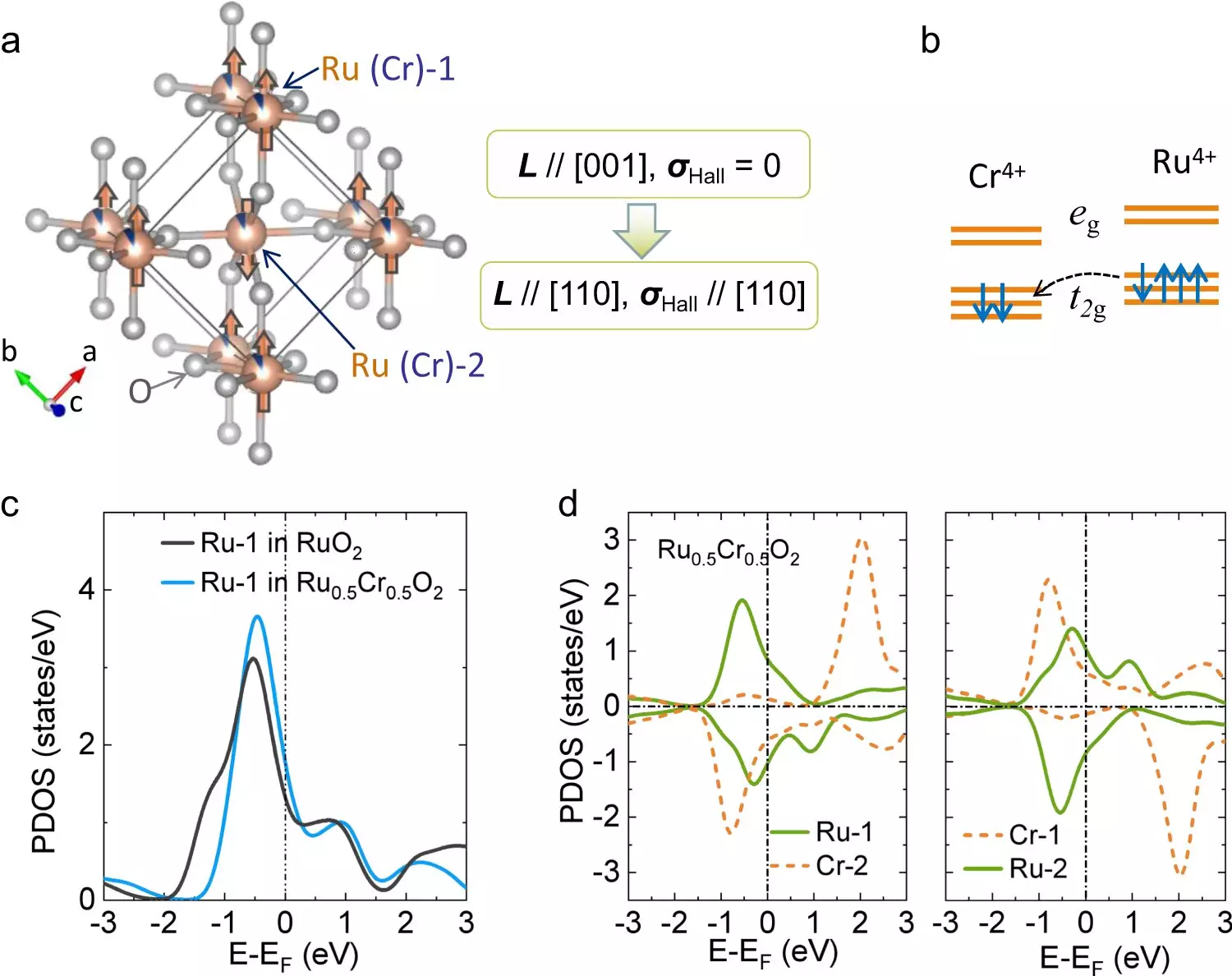Memory devices have traditionally relied on ferromagnetic materials such as iron and cobalt for data storage. These materials align the magnetic fields of individual atoms to store data. However, ferromagnets are not without their challenges. Neighboring areas can interfere, leading to spontaneous magnetization that corrupts data. This limitation restricts memory density, rendering ferromagnets less than ideal for high-capacity storage. Moreover, the process of switching magnetization patterns in ferromagnets is slow, hampering memory writing speeds.
In contrast, antiferromagnetic materials demonstrate a unique behavior where the magnetic fields of adjacent atoms align in opposing directions. This property holds promise for overcoming the limitations of ferromagnets in data storage. Despite the lack of observable magnetization in antiferromagnets, physicists have long speculated about the potential of the “anomalous Hall effect” as a solution. This effect could revolutionize data encoding and readout processes in antiferromagnetic materials, paving the way for enhanced memory storage capabilities.
Discovery of the Anomalous Hall Effect
The anomalous Hall effect, first observed in non-magnetic materials over a century ago by physicist Edwin Hall, refers to the bending of electrons’ paths in conducting materials when subjected to an electric field and an external magnetic field. In the case of antiferromagnetic materials, the anomalous Hall effect presents a groundbreaking opportunity to manipulate electrons for data storage without the need for an external magnetic field. Researchers at RIKEN, led by Meng Wang, have successfully demonstrated this effect in an antiferromagnetic metal composed of ruthenium and oxygen, augmented with a small amount of chromium.
The significance of this discovery lies in the simplicity of the antiferromagnetic metal’s structure, which enables easy fabrication in thin film form. This practicality opens doors for the integration of antiferromagnetic materials in computer memory storage devices, promising higher memory density and faster writing speeds. The ability to leverage the anomalous Hall effect in a straightforward antiferromagnetic structure marks a critical advancement in the field, with implications for the future of data storage technology.
The exploration of antiferromagnetic materials and the discovery of the anomalous Hall effect represent a significant leap forward in computer memory storage technology. By overcoming the limitations posed by ferromagnets, researchers have unlocked the potential for higher memory density and faster memory writing speeds. The implications of this breakthrough extend beyond the realm of fundamental research, offering practical applications that could revolutionize the way we store and access data in the digital age. As we continue to innovate and push the boundaries of material science, the future of computer memory storage appears brighter than ever before.


Leave a Reply